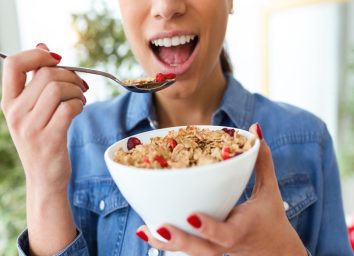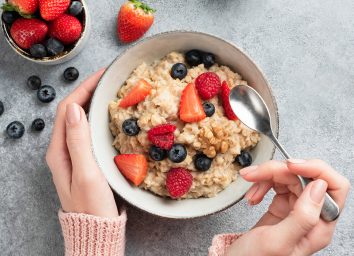6 Best Eating Habits To Reduce Inflammation as You Age, Say Dietitians
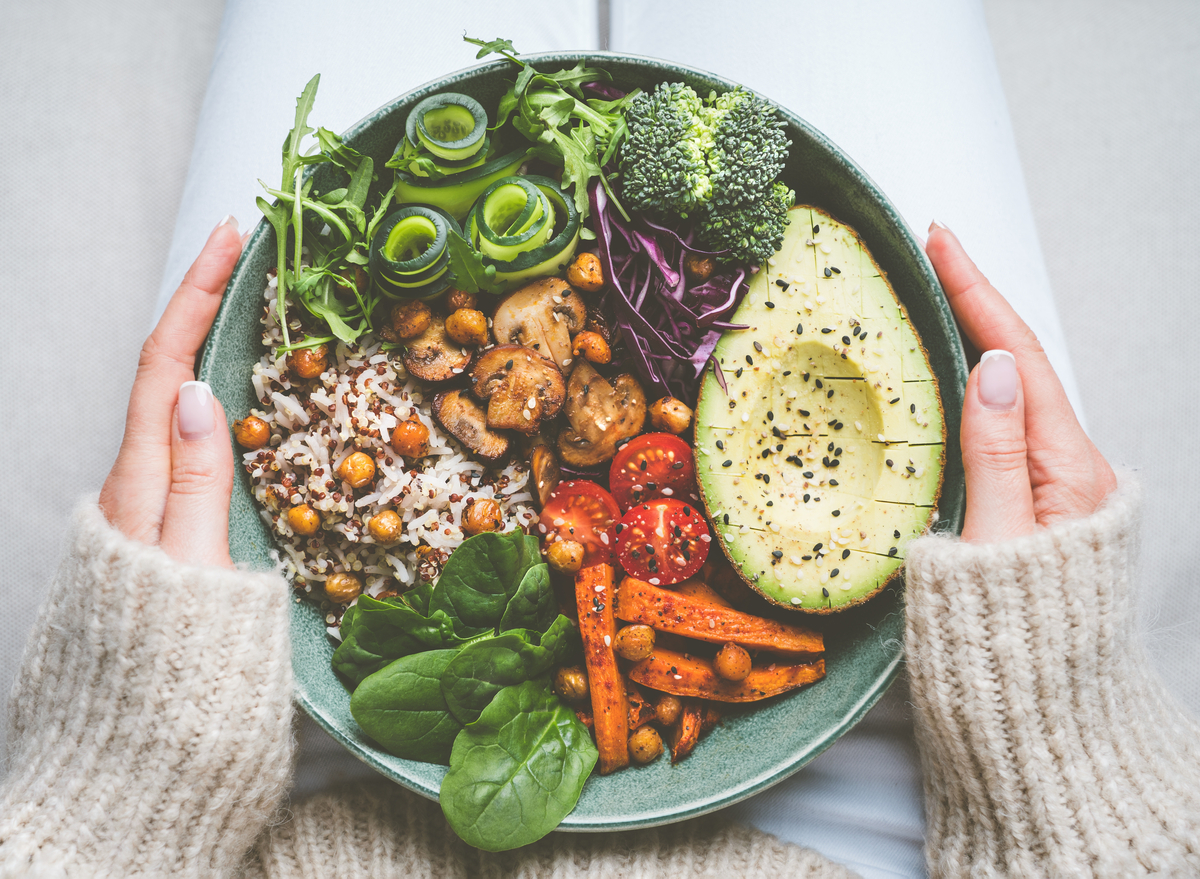
In case you haven't heard, chronic inflammation is believed to be a major risk factor for a wide range of age-related diseases like diabetes, hypertension, atherosclerosis, and cancer. Fortunately, there are a few things you can do to minimize inflammation as you age, thus reducing your risk of these health conditions. The first step is to take a look at your diet, according to Samantha Cassetty, MS, RD, nutrition and wellness expert and co-author of Sugar Shock.
"Hundreds of published studies connect an anti-inflammatory eating pattern with longer, healthier lives," she explains. "This means that as you age, you may experience less memory decline and stay in better physical and mental health."
A 2021 study published in The American Journal of Clinical Nutrition found that anti-inflammatory foods help combat systemic inflammation in multiple ways, including improving the gut microbiome, blood sugar responses, and blood fat responses. As for what not to do, Paulina Lee, RD, a functional dietitian and founder of Savvy Stummy, says it's best to avoid overly processed foods and refined carbs.
"These are typically foods that are high on the glycemic index (GI), which can raise the blood sugar more quickly, eventually leading to inflammation," she explains.
With all that in mind, here are some eating habits that may help fight inflammation as you age. and for more on how to eat healthy, don't miss The #1 Best Juice to Drink Every Day, Says Science.
Eat seafood 2-3 times a week.
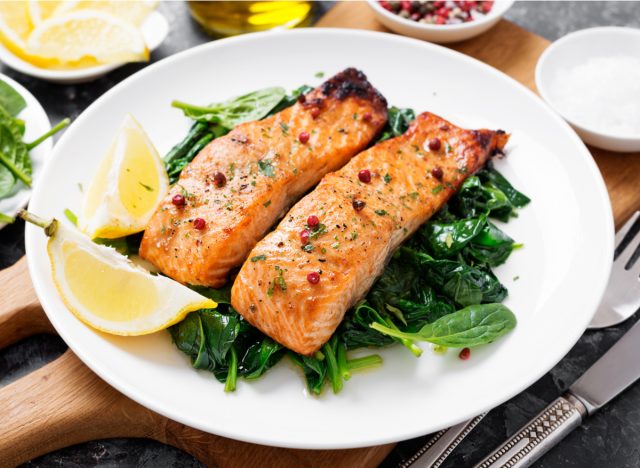
According to Rima Kleiner, MS, RD, founder of Dish on Fish, the omega-3 fatty acids in certain types of seafood—especially oily fish—help to "turn off" the inflammatory response.
In fact, one 2005 study in the Journal of the American College of Cardiology found that adults who ate fish regularly had 33% lower biomarkers of inflammation than those who didn't eat fish.
"Seafood is also rich in protein, which helps keep us feeling fuller longer and positively impacts blood sugar and blood fat levels, two factors we now know can impact inflammatory response," explains Kleiner. "I find it's easy to meet those goals by grilling salmon with vegetables for dinner, snacking on canned tuna and whole-grain crackers, and adding shrimp to a lunchtime salad."
Cassetty advises regularly cooking your seafood with extra-virgin olive oil and/or avocado oil, which also have anti-inflammatory properties.
Eat dark colored fruits and veggies.
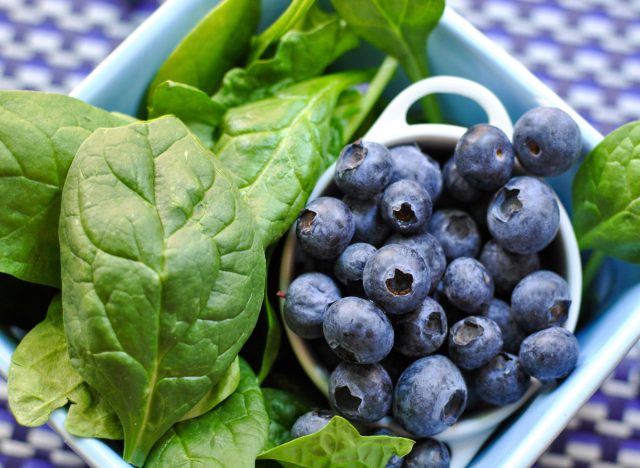
It's no secret that when it comes to your health, the more fruits and vegetables you load onto your plate, the better. But if reducing inflammation is your top concern, make it a point to prioritize dark-colored produce like blueberries, blackberries, purple grapes, kale, spinach, broccoli, asparagus, and beets. According to Vandana Sheth, RDN, the author of My Indian Table: Quick & Tasty Vegetarian Recipes, these fruits and veggies tend to be higher in antioxidants, which can protect your cells from the free radical damage that triggers chronic inflammation.
Fill your plate with about 75% plant foods.
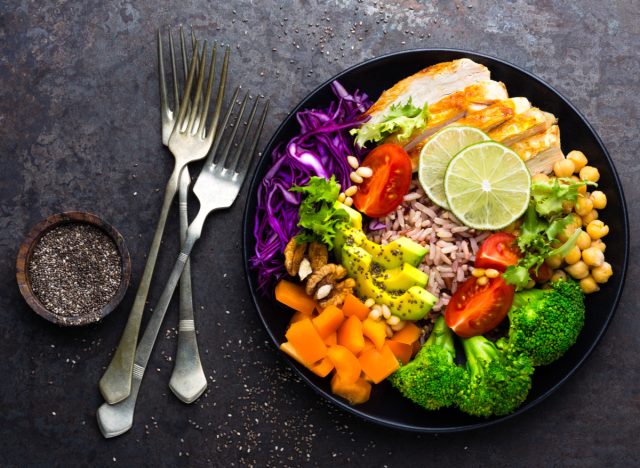
A certain amount of meat and dairy can still be a part of a healthy diet, but as a general rule, dietitians recommend keeping the portion sizes small and focusing more on plant-based foods. Making it a point to prioritize plant foods like veggies, fruits, whole grains, nuts, beans legumes, and seeds at every meal can go a long way in busting inflammation, says Cassetty.
"Plant foods provide vitamins, minerals, antioxidants, and various types of fiber, which enhance gut health," she explains. "This is important because a diverse gut microbial community is linked with lower inflammation and better health."
In fact, one 2018 study in the journal mSystems found that people who consumed 30 or more different plant foods per week had a healthier microbiome compared to those who ate ten or fewer plant foods each week.
Ideally, you want to aim for diversity, too, so you can reap the benefits of all the varied nutrients in these foods. For example, you might toss some peppers and onions into your egg white omelet at breakfast, add chickpeas and sunflower seeds to a salad at lunch, blend spinach and bananas into a mid-afternoon smoothie, and load up your dinner plate with quinoa, black beans, avocado, and tomato.
Eat more walnuts.

"Walnuts are a big part of my anti-inflammatory diet strategy," says Cassetty. "I eat toasted walnuts almost daily—in trail mixes, yogurt bowls, and with dark chocolate for dessert. This is because walnuts are the only nut with a significant amount of omega-3 ALA a type of good fat that may reduce inflammation. One 2020 study in the Journal of the American College of Cardiology found that people in their 60s and 70s who regularly ate walnuts had lower inflammatory markers."
Add fermented foods to your diet.
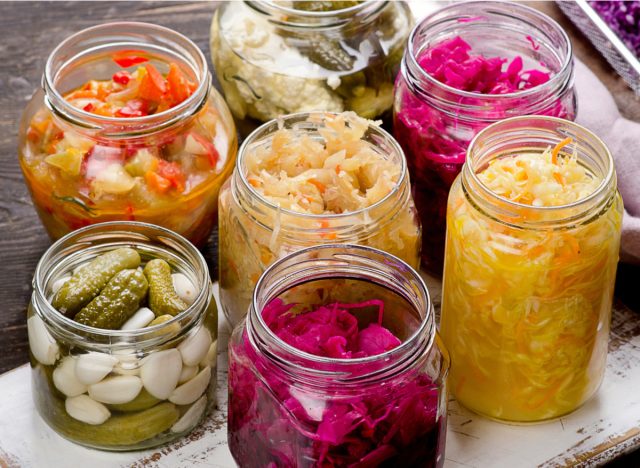
You may already know that fermented foods are packed with probiotics that boost gut health. What you may not realize is that, according to Lee, there's a strong link between gut microbiota diversity and inflammation.
From kimchi and kefir to sauerkraut and tempeh, there are lots of different fermented foods to choose from. Whichever you opt to add to your diet, rest assured that you'll be doing your body a favor: a small 2021 study in Cell found that a diet high in fermented foods decreases molecular signs of inflammation, with stronger effects from larger servings of these foods.
Always pair carbs with protein or fat.
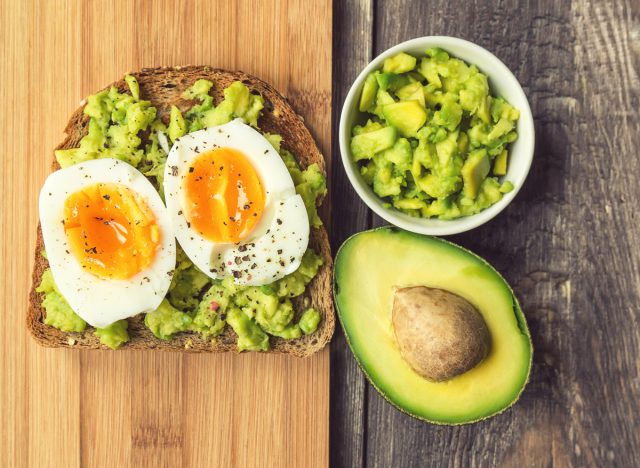
Eating plain carbs spikes your blood sugar, says Lee—and doing that regularly can contribute to inflammation over time. That's why Lee advises adding some protein and/or fat to round out the meal. For instance, rather than eating plain toast top it with almond butter, or sliced avocado and an egg. This will help to ensure a slower and more steady release of glucose into your bloodstream—thereby keeping inflammation at bay.
Keep in mind, too, that not all carbs are created equal. Whole grains that are rich in fiber—like farro, oats, brown rice, and bulgur—are far less likely to cause those pesky blood sugar spikes than refined grains like white bread, pasta, and rice.


